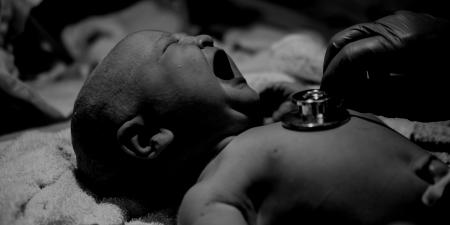Based on the video history, the medical students were asked how they would assess and manage these cases. No significant differences in diagnostic decisions and recommended management were related to patient weight, except for medically indicated differences, such as blood glucose monitoring and dietary counseling. However, the study revealed that medical students were less confident that obese patients would be able to comply with the nutritional and exercise recommendations, and they were less likely to want obese patients in their medical practice.
Despite its methodological limitations (such as convenience sampling and the hypothetical nature of the clinical encounter), this study sheds light on the complex and challenging issue of physician bias and its impact on medical decision making. More importantly, this study is part of a much larger inquiry into the seemingly intractable social, economic, legal, and political barriers that create a vicious cycle of health disparity that not only affects individuals but leads to a concretization of poor health across generations and geography4, 5, 6, 7, 8.
In the US, for example, the number of individuals and families living below the federal poverty line has decreased significantly over the past decade. Yet, over this same period, as the nation enjoyed unprecedented economic growth, the number of those without health insurance has reached epidemic proportions, with more than 16 percent of the US population unable to afford health insurance and millions more who have inadequate coverage. Inequities in health care on the global stage are staggering. More than 17 million Africans have died from AIDS and many millions more are infected with HIV. The impoverished nations of sub-Saharan Africa are crumbling under the weight of this modern plague. Without rapid and sustained assistance from the rest of the world, some of the most threatened countries may not survive as nation-states.
In both circumstances, the primary contributor to disparity in health is not medical but social, involving poverty and inequitable distribution of whatever wealth and resources exist. Addressing the medical consequences of social conditions such as poverty demands participation and leadership from physicians in their roles as citizens of a civil society. As physician-citizens, we can give of our expertise to those in need, support charitable organizations, endorse those who advocate for effective social policy, donate blood, register in a bone marrow bank, and always vote. Of course, this level of citizenry takes time, money, and effort, but, inasmuch as we are among society's most affluent members, we must strive to live up to these obligations. How the medical profession mobilizes to address the national and global crisis of disparity in health and other challenges to the welfare of humanity will largely determine the vitality and robustness of medicine's social contract with civil society.
In many respects, the social contract between medicine and society is embodied in the codes of ethics that establish the standards for professional conduct for members of the profession. The world's first national code of professional ethics was created more than 150 years ago at the founding of the American Medical Association. At the time, the AMA's Code of Medical Ethics was considered comparable in its revolutionary stance to the Declaration of Independence9, another social contract that forever redefined the terms of our human existence by proclaiming that all men (and women) are created equal.
References
- Wigton RS, McGaghie WC. The effect of obesity on medical students' approach to patients with abdominal pain. J Gen Intern Med. 2001;16(4):262-265.
- Rice JH, Desmond SM, Krol RA, Snyder FF, O'Connell JK. Family practice physicians' beliefs, attitudes, and practices regarding obesity. Am J Prev Med. 1987;3(6):339-345.
- Blumberg P, Mellis LP. Medical students' attitudes toward the obese and the morbidly obese. Int J Eat Disord. 1985;4(2):169-175.
- Basu J. Access to primary care: the role of race and income. J Health Soc Policy. 2001;13(4):57-73.
- Epstein AM, Ayanian JZ. Racial disparities in medical care. N Engl J Med. 2000;282(19):2579-2584.
- Fiscella K, Franks P, Gold MR, Clancy CM. Inequality in quality: addressing socioeconomic, racial, and ethnic disparities in health care. JAMA. 2000;283(19):2579-2584.
- Ayanian JZ, Cleary PD, Weissmann JS, Epstein AM. The effect of patients' perferences on racial differences in access to renal transplantion. N Engl J Med. 1999;22(1661):1669-
- Ayanian JZ. Race, class, and the quality of medical care. JAMA. 1994;271(15):1207-1208.
-
The American Medical Ethics Revolution: How the AMA's Code of Ethics Has Transformed Physician's Relationships to Patients, Professionals, and Society. Eds. Baker RB, Caplan AL, Emanuel LL, Latham SR. Baltimore, Md: The Johns Hopkins University Press. 1999.



